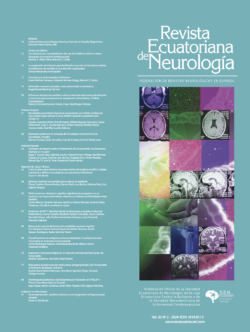Current tendency is towards minimally invasive surgical approaches that offer short-term recovery and short hospital stays, reducing the costs of treatment. In cranial neurosurgery, minimally invasive surgery is based on the Key-hole concept, that is, small surgical incision that allow an approach to the lesion using natural microsurgical corridors at the subarachnoid space. The technique that we present in this paper may be carried out with basic surgical equipment and instruments, and do not depend on sophisticated technology. In this article, we present our experience in 250 patients with the technique of key-hole surgery of the cerebelopontine angle. We had excellent results that were similar to those reported in the literature, since we had a low postoperative morbidity, fast recovery, fast recovery, reduced offers the advantage of reduced costs for both patients and institutions.
Artículos Originales
Gliosarcomas Cerebrales: Aspectos Clínico-Quirúrgicos, Correlación con Estudios de Neuroimagen, Hallazgos inmunohistoquímicos y Pronóstico.
Gliosarcomas are maling, rare, and dimorphic neoplasms formed by glioblastoma associated with sarcomatous components that may develop from the malignant transformation of hyperplastic vascular elements. We report three patients with gliosarcoma to analyze the correlation between neuroimaging and surgical findings, and prognosis. Clinical manifestations had a sudden onset, in previously healthy patients, and was characterized by a syndrome of intracranial hypertension of acute onset related to the development of an intratumoral hemorrhage. In two of our patients the tumors were observed as intra-axial lesions having large areas of necrosis and peripheral enhancement of contrast material. This finding is similar to that observed in patients with glioblastomas. The other patient presented with a well-defined and homogeneous hyperdense lesion the resembled a meningioma. In our series the patients with the longest survival was the one who had a lesion resembling a meningioma, in whom the sarcomatous component of the lesion predominated.
Leer artículo completo
Epilepsias Mioclónicas
Objective: To analyze the frequency of myoclonic epilepsies (ME) according to the classification of the International League Epilepsy (ILAF) and workshop of the Comission on Pediatric Epilepsy (Royaumont-France 1997), considering the possibility to include or modifi myoclonic epileptic syndromes. Patients and Methods:Clinic histories of 113 patients (56 men and 57 women) with diagnostic of ME evaluated between January 1993 and July 1998 were reviewed. Early epileptic encephalopathy, progressive and photosensitive epilepsies, as well as other epilepsies presenting with myoclonic seizures during their evolutive course, were excluded. Results: We recognized the following syndromes: a) Idiophatic: 1) Bening ME of Infancy, 10 cases (8.8%), 2) Reflex ME of Infancy, 2 cases (1.8%), 3) Eyelid myoclinia with absence (EMA), 3 cases (2.6%), and 4) Juvenile ME, 29 cases (25.6%); b) Cryptogenic: 1) Myoclonic-Astatic Epilepsy (MAE) of favorable course, 21 cases (18.5%) and unfavorable course, 10 cases (8.8%), 2) Severe ME of infancy, 25 cases (22.1%), and 3) Myoclonic absence epilepsy, 2 cases (1.8%); and c) Symptomatic: 1) MAE, 2 cases (1.8%), 2) Severe ME of Infancy, 2 cases (1.8%), 3) Myoclonic Status in non-progressive encephalopathies (MSnPE), 4 cases (3.5%), and 4) others, 3 cases (2.6%). Conclusion: Cryptogenic (51.3%) and idiopathic (38.9%) seizures were the most common types of ME in our study. In the idiopathic group, the most frequent syndrome was juvenile ME, while in the cryptogenic group, was the Myoclonic-Astatic epilepsy. We consider that EMA should be included in the new classification of epilepsies as an idiopathic syndrome. We also suggest that Reflex ME of Infancy should be discussed as a new syndrome of ME or as a variant of benign ME of Infancy. Finally, whether MsnPE is a new syndrome or a peculiar evolution of symptomatic epilepsies needs further discussion.
Leer artículo completo
Aneurismas Intracraneales Grandes y Gigantes
Globular intracranial aneurysms are those that have a diameter between 15 and 25 mm, and giant aneurysms are those measuring more than 25 mm. The managing of these lesions in controversial. While mosto studies favor surgical exclusion of globular and giant intracranial aneurysms, several non-surgical options of management have been recently developed. In the present study, we report our experience with 15 operated globular and giant aneurysms over a 17 –year period. We analyze the time elapsed between bleeding and surgery, as well as the surgical technique and the outcome. We compare our results with other studies and consider that surgery is the therapeutic approach of choice for these lesions.
Leer artículo completo
Abnormal Involuntary Movements and Hydrocephalus
Background: Abnormal involuntary movements have been described in patients with hydrocephalus. However, the etiophatogenesis of this association has not been clarifed. We study the presence of dyskinesia, as weel as its clinical and demographic characteritics in patients with hydrocephalus. Design and patients: Series of cases studied during a 10 year period in a neurologic service of a third-level reference hospital. Nine subjects, 6 men and 3 women (mean age: 67 years) in whom hydrocephalus proced dyskinesia. Results: Hydrocephalus preced in 2.33 years the appearence of dyskinesia. Dyskinetic symptoms included tremor in 6 patients, parkinsonism in 1, and dystonia in 2. Five of these patients had family history of dyskinesia in parents or siblings. In 4 of them, the placement of a ventriculoperitoneal shunt improved the abdominal movements. Conclusion: Hydrocephalus may trigger dyskinesia (tremor, parkinsonism, and cranial-cervical dystonia) in a group of susceptible patients who are in their sixties and have a familiy history of movement disorders. It is possible that hydrocephalus due to mechanic distrotion or to alteration of blood flow to the basal ganglia or both, causes an unbalance between the central and the peripheral impulses for tremor and parkinsonism to appear; on the other hand, ti might unlock the control that basal ganglia exert on the motor-neurones of the trigeminal and facial motro nuclei thus triggering the cranial-cervical dystonia.
Leer artículo completo
Open label study of riluzole for the treatment of amyotrophic lateral sclerosis
Amyotrophic lateral sclerosis (ALS) has a 5-years mortality of 80%. Several treatment modalities have been used to delay disease progression. The aim of the currrent study was to evaluate of riluzole on clinical progression as assessed by jablecki’s scale in Mexican patients with ALS. Fifty patients with a definitive diagnosis of ALS according to El Escorial criteria were selected. To measure the usefulness of riluzole therapy, disease progression was measured before and after treatment with jablecki’s scale. Patients received a daily oral dose of 100 mg of riluzole throughout the one-year study period. For the 50 patients initially enrolled, 31 (62%) completed the study. After the one-year, monthly progression decreased to 0.5682 points per month (p<0.05). In the 14 bulbar-onset patients with spinal-onset, initial progression was 0.6702 points per month, which decreased to 0.5551 (p<0.05). In 17 patients with spinal-onset, initial progression was 0.6702 points per month, which decreased to 0.5789 (p<0.05). There were no severe side effects related to therapy. Riluzole can delay disease progression and its use should be considered in ALS patients, after making it clear to them and their families that they will not be cured, and after taking into account cost-benefit issues.





